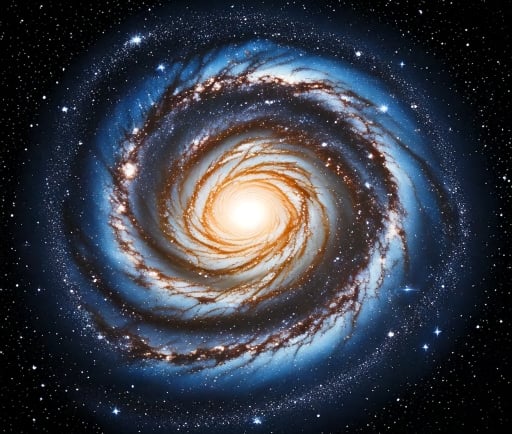The Diversity of Galaxies: Irregular, Elliptical, and Spiral Types


Understanding Galaxies: An Overview
Galaxies are vast systems that comprise stars, stellar remnants, interstellar gas, dust, and dark matter, held together by gravity. They play a pivotal role in the universe's structure and evolution. Among the diversity of galaxy types, three prominent categories stand out: irregular galaxies, elliptical galaxies, and spiral galaxies. Each type exhibits unique properties and characteristics that offer insights into the cosmos.
Irregular Galaxies: Dynamic Entities
One of the defining characteristics of irregular galaxies is their composition. They are typically rich in gas and dust, which facilitates ongoing star formation. This activity results in a stunning tapestry of young, bright stars standing out against the dimmer backdrop of the galaxy. Additionally, irregular galaxies are often found interacting with other galaxies, which can lead to gravitational interactions that further enhance their irregularity.
Moreover, the overall number of stars in irregular galaxies can vary widely, presenting either a densely populated nucleus or a more dispersed collection of stars. The absence of a clear bulge or disk makes them unique and often provides a more complex environment for studying the cosmic phenomena that shape our universe.
Elliptical Galaxies: The Quiescent Giants
In stark contrast, elliptical galaxies represent the other end of the galactic spectrum. These galaxies are characterized by their smooth, featureless light profiles, resembling a three-dimensional ellipse. Elliptical galaxies generally lack the structured spiral arms seen in other types and are comprised mostly of older stars, giving them a more 'mature' appearance. Due to their minimal gas and dust content, they exhibit significantly lower star formation rates compared to normal and spiral galaxies. This often leads to a greater concentration of older stellar populations, making elliptical galaxies appear yellowish or reddish in color.
Spiral Galaxies: The Whirls of Cosmos
Spiral galaxies are one of the most well-known types, often recognized by their stunning, spiral-shaped arms that unfurl from a central bulge. These arms are not just visually appealing; they are rich with young, blue stars, vibrant star-forming regions, and significant amounts of gas and dust. The Milky Way is an example of a spiral galaxy, which contains billions of stars and is home to our own solar system. Spiral galaxies can also be categorized into further subtypes depending on the prominence of their arms and central bulge. Their structure and composition facilitate a higher rate of star formation, making them essential for understanding galactic evolution.
Conclusion: The Galaxy Landscape
In conclusion, the study of irregular, elliptical, and spiral galaxies provides crucial insights into not only the cosmos but also the fundamental physics governing stellar formation and galactic dynamics. Appreciating the diversity among these galaxies is vital for understanding the universe’s past, present, and future. As we advance in technology and observational capabilities, the unfolding mysteries of galaxies will continue to captivate astronomers and enthusiasts alike.
